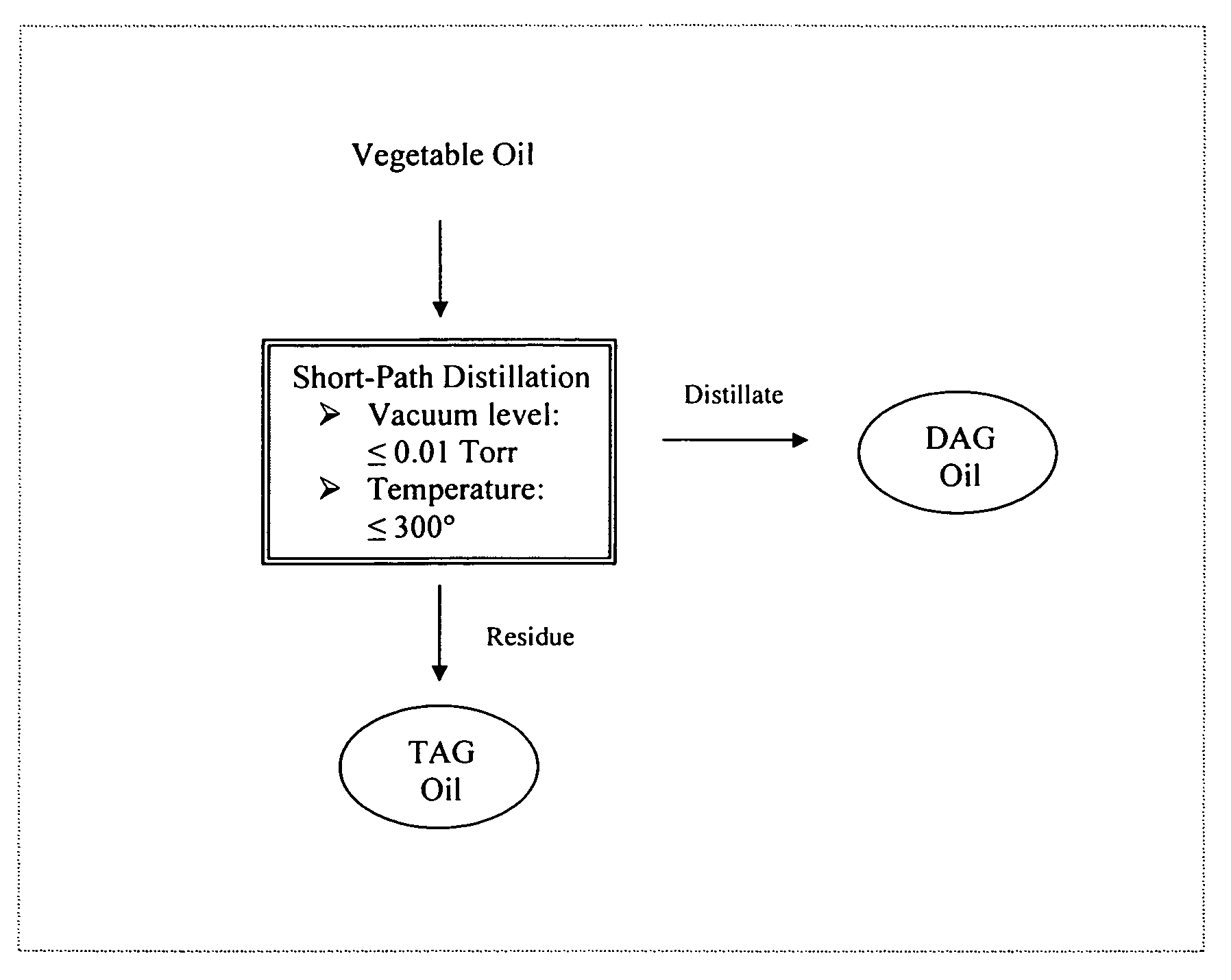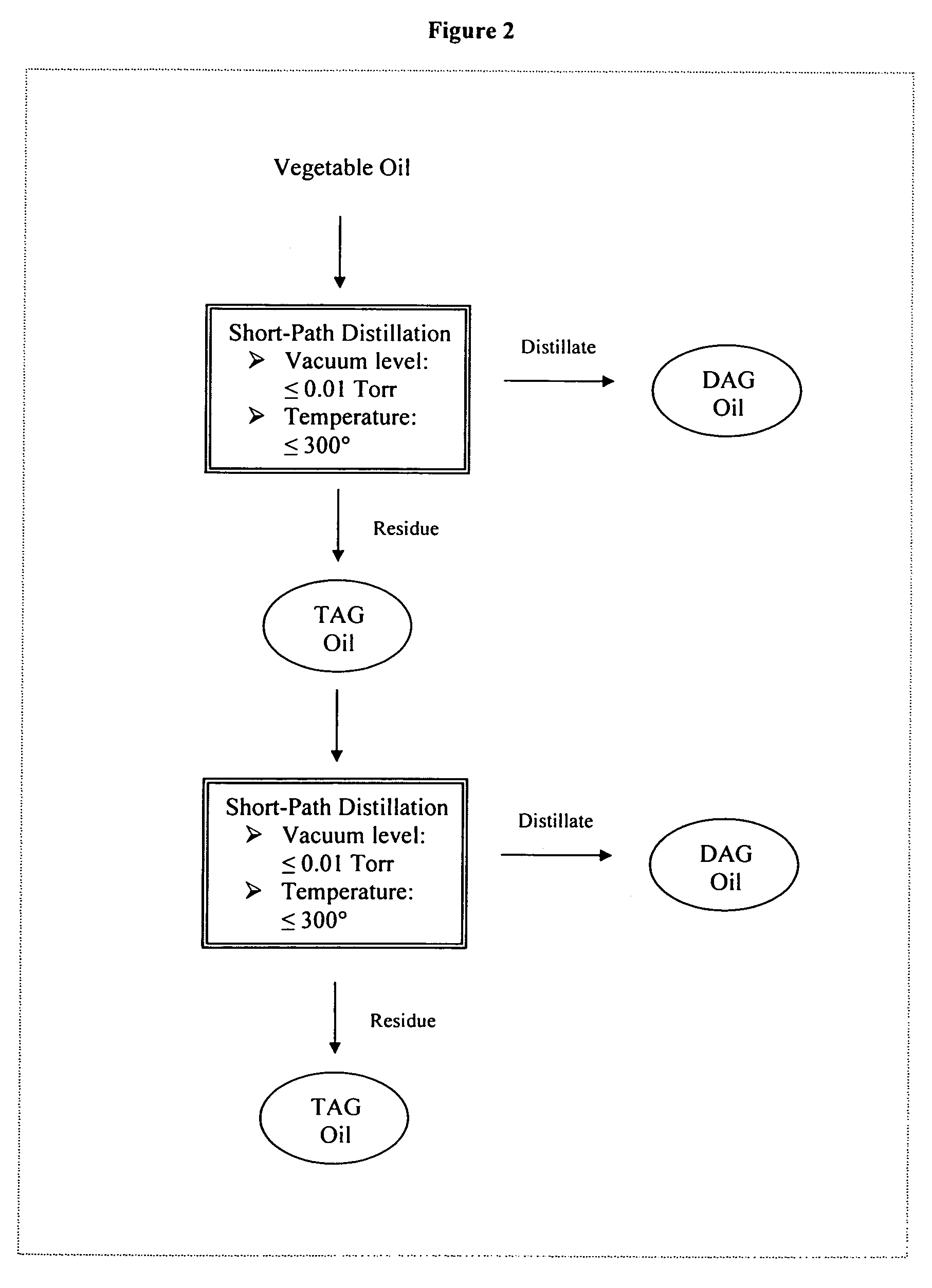Production of edible oil
a production method and edible oil technology, applied in the direction of fatty oil/fat separation, fatty oil/fat separation, carboxylic compound separation/purification, etc., can solve the problems of poor flavour of fried product, unsuitable for frying oil,
- Summary
- Abstract
- Description
- Claims
- Application Information
AI Technical Summary
Problems solved by technology
Method used
Image
Examples
example 1
[0026]A portion of RBD palm olein was subjected to short-path distillation under vacuum level of not more than 0.01 Torr and at temperature of 150° C. by using a pilot plant wiped-film short-path distillation unit (Pope Scientific Inc., USA). The feed rate of RBD palm olein was maintained at 6.0-8.5 ml per minute. The vacuum level and temperature were maintained constant throughout the short-path distillation process. The distillate and residue collected were analyzed for their respective content of FFA, MAG, DAG, TAG, Vitamin E, sterols and squalene.
[0027]The residue collected was subjected to a second stage of short-path distillation under the same condition as specified above. The distillate and residue collected from the second stage of short-path distillation were also analyzed for their respective content of FFA, MAG, DAG, TAG, Vitamin E, sterols and squalene.
[0028]Results of the analysis are tabulated in Table 1.
example 2
[0029]The steps in Example 1 were repeated for another five portions of RBD palm olein under the same vacuum level but at different temperature for each portion of RBD palm olein. For the first portion, the steps were repeated at temperature of 170° C.; 190° C. for the second portion; 210° C. for the third portion; 230° C. for the forth portion and 250° C. for the fifth portion.
[0030]Results of the analysis done on all the distillate and residue collected are also tabulated in Table 1.
[0031]Unlike the prior art methods for production of DAG oil which would destroy the natural content of phytonutrients, particularly phytosterols, of the starting oils / fats used resulting in a DAG oil with negligible content of phytonutrients, the present method is able to preserve the natural content of phytonutrients of the starting oils / fats used resulting in a DAG oil with high content of phytonutrients. On top of that, the present method also produces TAG oil with reduced content of DAG. Hence, th...
PUM
| Property | Measurement | Unit |
|---|---|---|
| temperature | aaaaa | aaaaa |
| temperature | aaaaa | aaaaa |
| temperature | aaaaa | aaaaa |
Abstract
Description
Claims
Application Information
 Login to View More
Login to View More - R&D
- Intellectual Property
- Life Sciences
- Materials
- Tech Scout
- Unparalleled Data Quality
- Higher Quality Content
- 60% Fewer Hallucinations
Browse by: Latest US Patents, China's latest patents, Technical Efficacy Thesaurus, Application Domain, Technology Topic, Popular Technical Reports.
© 2025 PatSnap. All rights reserved.Legal|Privacy policy|Modern Slavery Act Transparency Statement|Sitemap|About US| Contact US: help@patsnap.com



